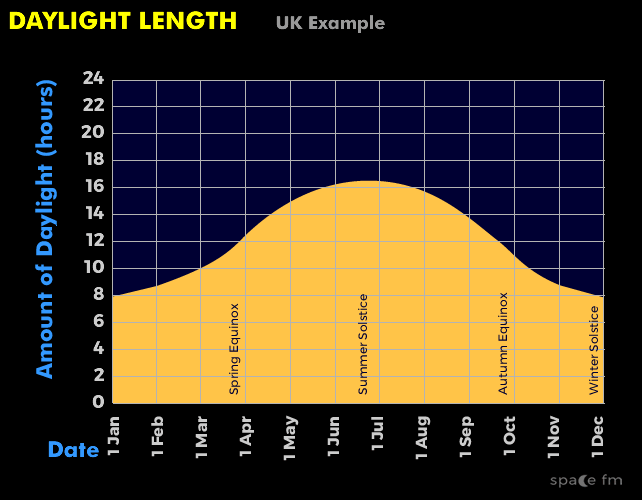Daylight
4.11 - Understand the annual variation in times of sunrise and sunsetThe amount of daylight a location of Earth receives at any one time will depend on its position on Earth and the time, or season, of year.
Look at the table on the right for London.
We can then construct the following diagram (on the right) using the date on the X axis and the number of hours on the Y axis.
Sunrise is the moment the Sun's upper limb appears above the horizon. Likewise sunset is when the Sun's upper limb disappears below the horizon.
At the spring and autumnal equinox the Sun rises in the east and sets in the west. Day and night are the same length.
At the Winter solstice the Sun rises south of east and sets south of west. There is less daylight.
At the Summer solstice the Sun rises north of east and sets north of west. There is more daylight.
Average daylight hours in the UK
| Date | Daylight (hours) |
|---|---|
| December 21st | 7.5 |
| March 21st | 12 |
| June 21st | 15.5 |
| September 21st | 12 |
Questions
Why do we have more daylight at different times of the year?
Animation
Links
- Time and Date Sunrise and sunset times – United Kingdom
- Time and Date Day and Night World Map

 | © All Rights Reserved |
| © All Rights Reserved |